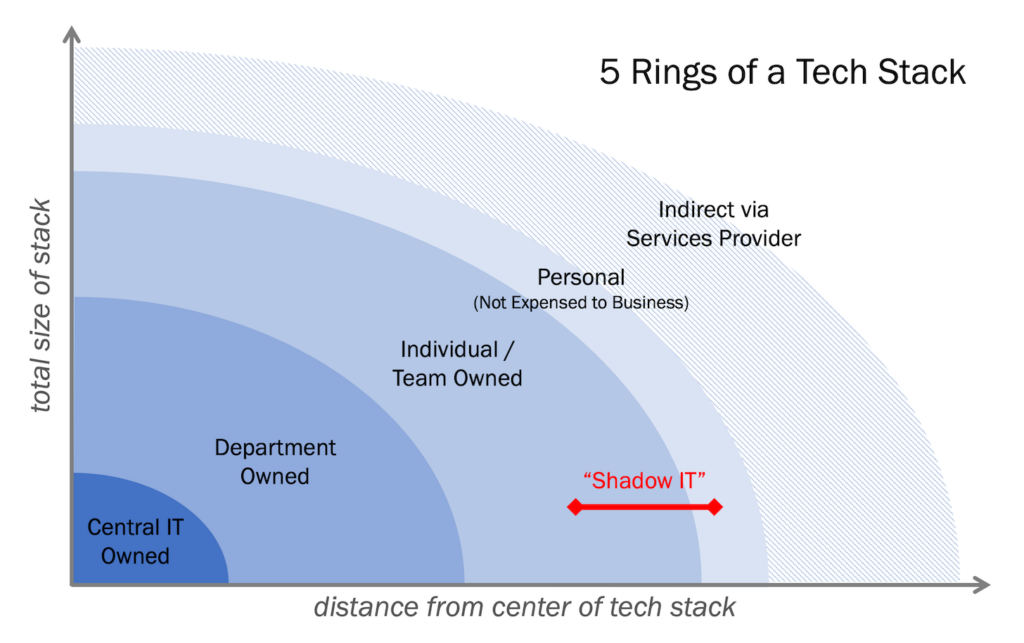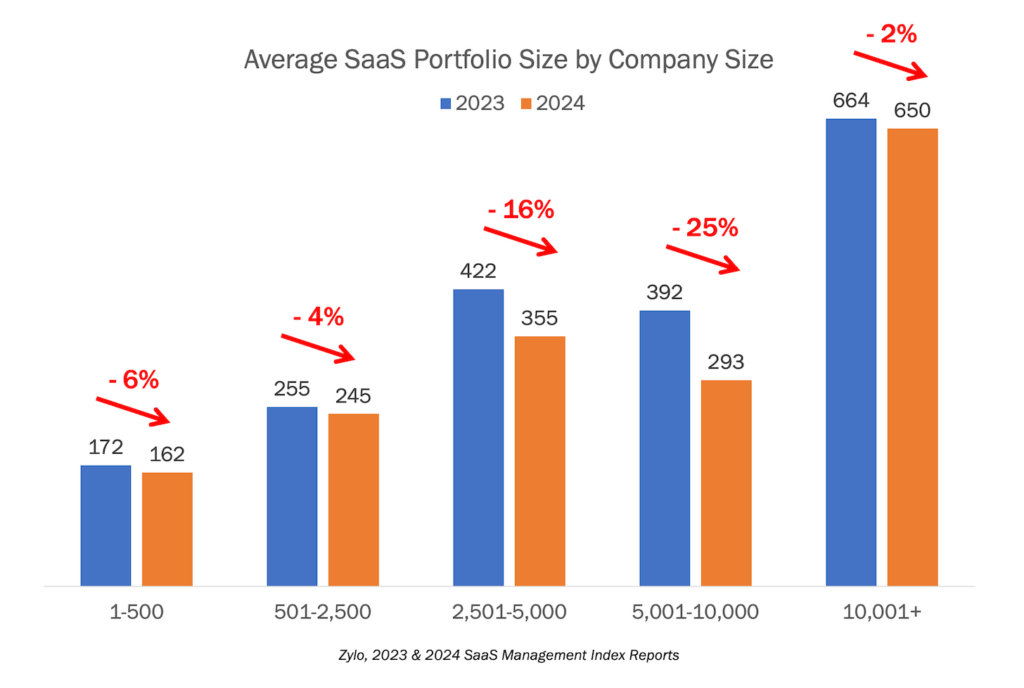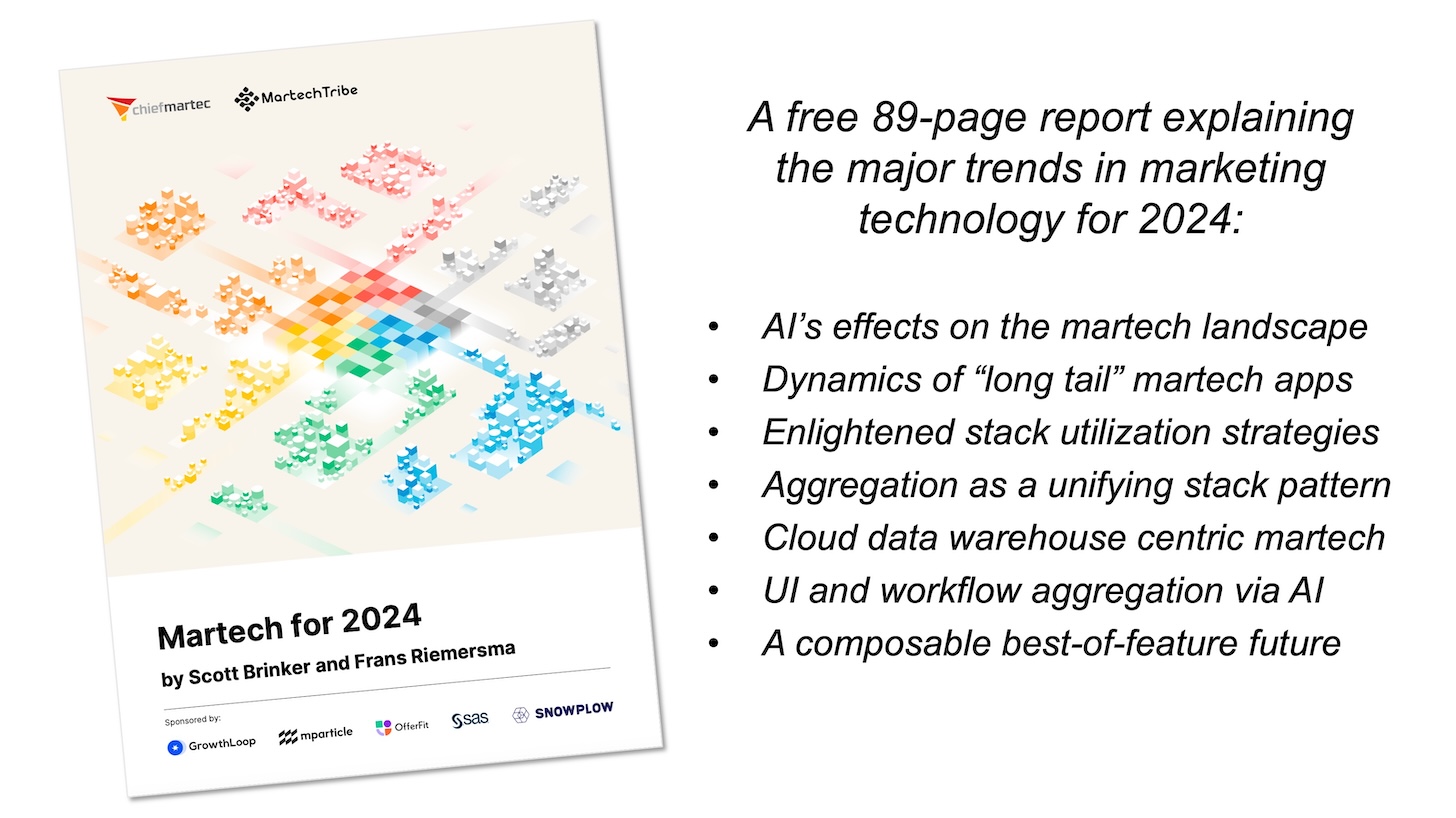
There was a meme circulating around social media last week of an agency marketer rambling in a “thought leadership” interview on TikTok. I have no idea if it was parody or real. Or more accurately, if it was intentional or accidental parody. It was a jumbled jubilee of buzzword bingo – personalization, data, brand, experience, customer-centricity — that wound up saying absolutely nothing at all.
There but for the grace of God go I in any 60-second interview clip.
I feel for the speaker. It’s hard to explain why this is such an incredible time of technology-powered transformation in marketing in a few brief remarks. And if you try to tie it to the keywords that people are overindexing on at the moment, it’s all too easy to blend into the same backbround-radiation platitudes we’ve been observing for two decades of digital marketing. Now with “AI” inserted in every other sentence.
Which is my — ha — awkward segue to announce that Frans Riemersma and I have just published Martech for 2024, an 89-page report on the state of marketing technology as we head into 2024.
You’ll be the judge, but I hope you find it a different — and useful — read. Rather than short, listicle-like predictions of what we imagine might happen next year, we started with empirical data of what is already happening today. We try to explain those phenomenon in plain language and then extrapolate where those trends are logically taking us.
We discuss AI, of course. But we spend more time describing major archictectural shifts underway in martech — aggregation and composability — that will enable much more advanced AI use cases. These are the giant shoulders that gen AI will stand upon.
As a kind of “easter egg”, we also include a mid-year update on the marketing technology landscape. Thanks to a flurry of AI-powered startups, the landscape grew 18.5% in just the past six months. It took four years for the landscape to grow from ~150 to ~2,000 solutions, from 2011 to 2015. Now we added that many apps in a few short months.
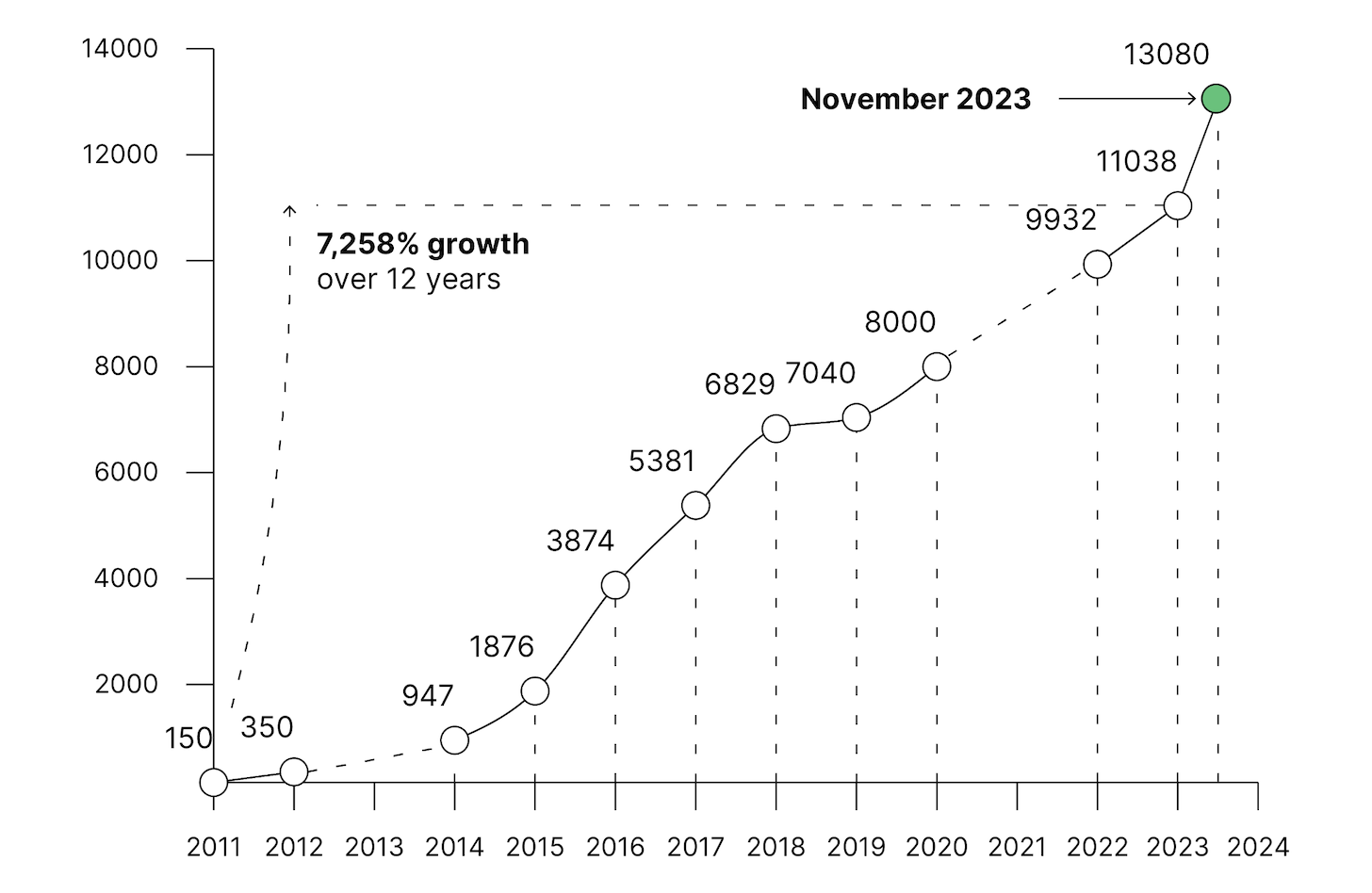
Now, I know this will be immediately rebutted by people arguing that the half-life of many of these apps is likely to be quite short. They may be right. Indeed, the forces of consolidation are hard at work across the entire SaaS universe.
But there’s more to the story. We dive into a thorough examination of what’s happening in the long tail of martech apps. It is far from homogenous, with high variance in both their longevity and growth potential. It is an engine of continual renewal, driving the evolution of our industry.
That hot mess of startups and even pre-startup hobby horses, rapidly iterating new ideas on the frontier, is the star foundry from which red giants — or blue giants or orange giants, if you get my drift — will be born, fed, and inspired.
To appreciate this cycle of renewal, consider the distribution of martech apps in over 1,000 stacks that Frans and I collected over the past 7 years:
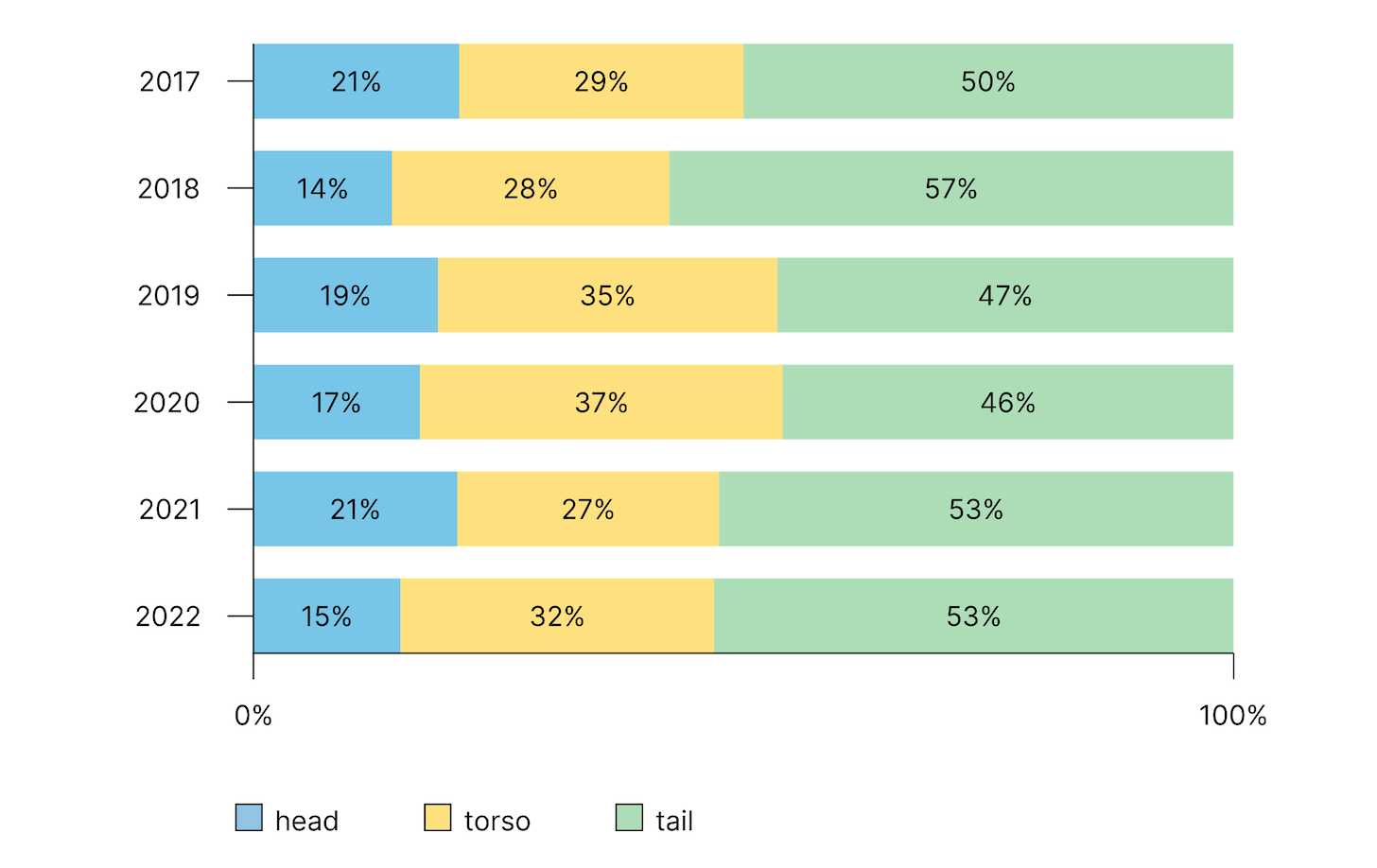
Despite the enormous forces of consolidation by major platforms in the head — Adobe, HubSpot, Microsoft, Oracle, Salesforce, etc. — we see a relatively constant balance with torso apps (large specialist apps, generally north of $100 million in revenue) and small apps in the tail (everything else).
This isn’t a cost distribution. Or even a scale of usage distribution. But it is a distribution of the count of apps in marketers’ tech stacks that empirically show the torso and the tail have remained vibrant parts of the equation.
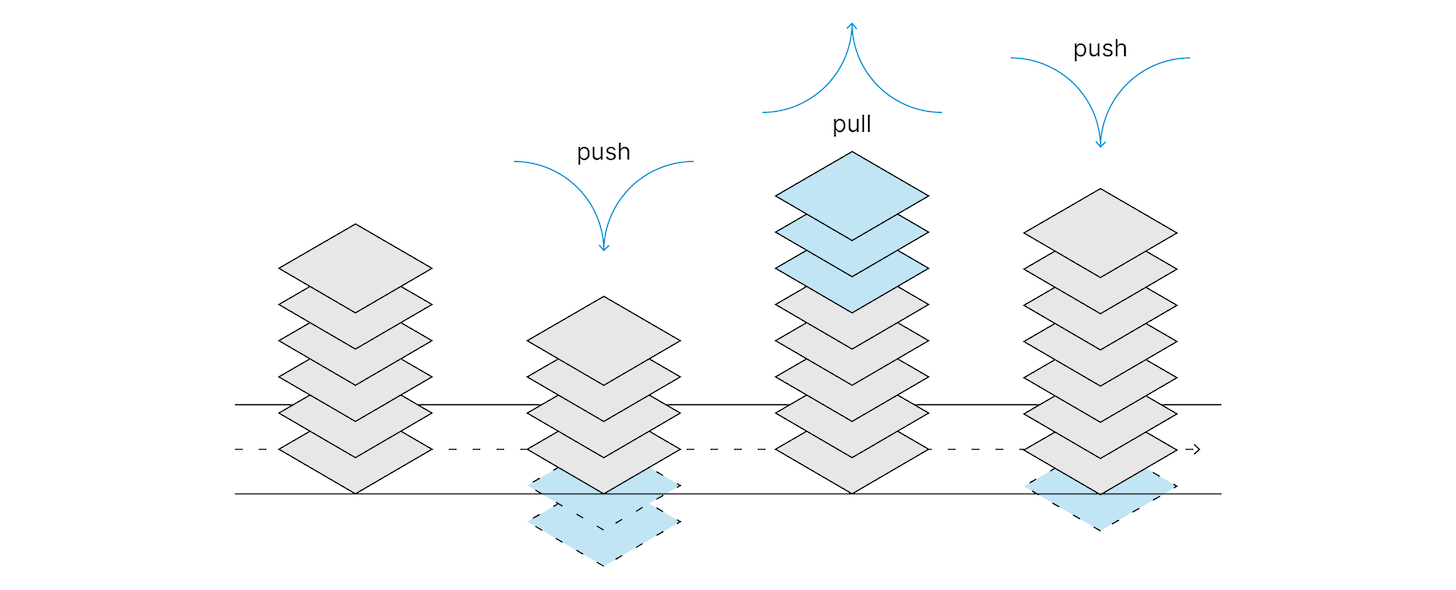
It’s important to recognize that the composition of our martech stacks is never static. We constantly see apps in the tail — and to the lesser extent in the torso — shuffled out as either their relevance or uniqueness wanes. But then new apps in the tail, pushing some new boundary in martech innovation, emerge to take their place.
This dynamic is what brings us back to the themes of aggregation and composability.
But if you want the full explanation of that, you’ll need to download the Martech for 2024 report, where another 85 pages await you beyond the surface I’ve barely scratched here.
One more thing. We’re incredibly grateful to GrowthLoop, mParticle, OfferFit, SAS, and Snowplow, who sponsored this report that we’ve been researching for the past five months.

They had no say over the body of our report. However, we did include interviews with each of them to elicit their perspective on these trends. While they obviously have commercial interests in their points of view, they also have tremendous domain expertise in the areas in which they’re competing. We guided these interviews to tap their insights and experience in a non-promotional manner:
- Aggregated audience and customer journeys (GrowthLoop)
- Customer data infrastructure in an AI era (mParticle)
- Overcoming the three bottlenecks of personalization (OfferFit)
- An important time for responsible marketing (SAS)
- Operationalizing first-party data in the customer experience (Snowplow)
I think you’ll find these interviews fascinating in their own right. I certainly did.
Again, you can download the full report here.
